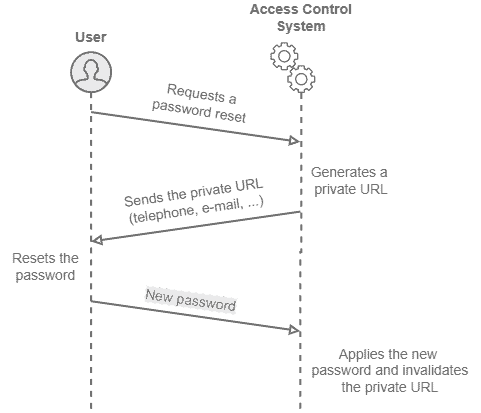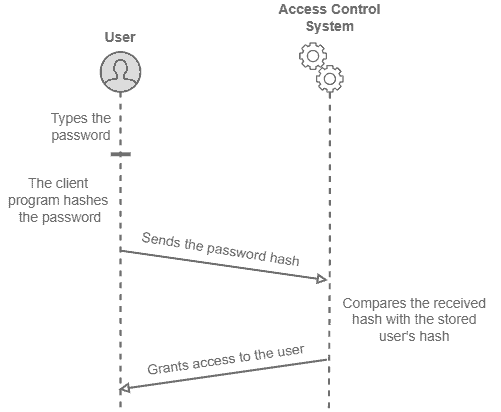1. 私有URL与基于密码的身份验证
1.1 引言
在本教程中,我们将探讨私有 URL 和基于密码的身份验证是如何在网络服务中实现访问控制的。我们会先简要介绍访问控制的基本概念,然后分别深入探讨这两种访问控制机制,最后对它们进行系统性的对比总结。
对于有经验的开发者来说,理解这些机制的原理和适用场景,有助于在构建系统时做出更安全、更合理的设计决策。
1.2 技术背景
如今,越来越多的数字服务通过网络提供,尤其是借助互联网。这些服务包括电商平台、用于安排工作日程的管理系统,以及学术论文写作专用系统等。
将服务迁移到云端,主要受到两个因素的推动:
- 互联网的普及
- “即服务”(as-a-Service)模式的兴起
随着互联网接入的普及,云服务变得越来越流行。服务商借助云基础设施来部署和提供服务,用户则通过任意联网设备访问和使用这些服务。
然而,这种模式也带来了新的挑战。其中之一就是:如何确保只有授权用户才能访问通过云提供的系统和资源?
为了解决这个问题,业界采用了多种访问控制技术,其中包括:
- 私有URL
- 基于密码的身份验证
1.3 访问控制概述
访问控制(Access Control)主要涉及对数字资源和系统的访问权限管理,我们不讨论物理访问控制,仅关注逻辑层面的控制机制。
简单来说,访问控制是一系列安全技术的集合,用于决定谁可以访问某个系统或资源。它对于防止数据被未经授权地读取、修改,以及系统被非法操作至关重要。
访问控制技术主要分为以下两类:
基于身份验证的方法(Authentication-based methods)
目标是确认用户是否是其声称的身份。验证方式可以基于用户知道的内容(如密码)、拥有的物品(如令牌)、或其生物特征(如指纹)等。授权策略决定了用户能访问哪些资源。基于隐蔽性的方法(Obscurity-based methods)
这类方法依赖于某些信息的“秘密性”来实现安全控制,例如通过不可预测的URL。这类方法在安全领域通常被认为不够可靠,不能单独作为主要的安全控制机制。
接下来,我们将分别深入讨论两种常见的访问控制机制:私有URL 和 基于密码的身份验证。
1.4 私有URL
私有 URL(Private URLs)是一种基于隐蔽性的访问控制技术。其核心思想是通过生成不可预测的 URL 来授予用户对特定资源的访问权限。
一旦用户获得了这个 URL,只需将其粘贴到浏览器中即可访问资源。因此,私有 URL 常用于一次性访问场景,如密码重置、账户确认、数字内容分发等。
✅ 必要条件
要安全地使用私有 URL,必须满足以下两个基本要求:
URL 必须不可预测
生成 URL 的算法和参数不能泄露,必须保密。URL 的分发必须受控
系统应通过用户的私密通信渠道(如邮箱、短信)将 URL 发送给用户,避免被第三方截获。
✅ 可选增强特性
为了提升私有 URL 的安全性,还可以考虑以下增强特性:
- 单次访问 URL:URL 一旦被访问就立即失效
- 一次性使用 URL:系统不再重复生成相同的 URL
- 复杂 URL:确保 URL 无法在合理时间内被暴力破解
- 最小信息泄露:被保护的页面和数据不应暴露请求者的身份信息
✅ 示例场景:密码重置流程
下面是一个使用私有 URL 实现密码重置的时序图:

1.5 基于密码的身份验证
基于密码的身份验证是一种典型的基于身份验证的访问控制方式。用户需要提供一个只有自己知道的机密信息(密码)来证明自己的身份。
与私有 URL 不同,密码通常是多轮使用的,即同一个密码可以在多次登录中使用。
✅ 必要条件
要安全地实现基于密码的身份验证,必须满足以下两个基本要求:
密码生成策略
系统应要求用户设置强密码,例如包含大小写字母、数字、特殊字符等,以提高密码的不可预测性。密码安全存储
密码不能以明文形式存储。通常使用哈希算法对密码进行加密存储,只保存其哈希值。
✅ 可选增强特性
为了进一步提升安全性,还可以采用以下策略:
- 密码定期更换策略:系统要求用户每隔一段时间更改密码
- 多步骤身份验证(Multi-step Authentication):例如先输入密码,再输入短信验证码
✅ 示例场景:成功登录流程
下面是一个基于密码的身份验证成功登录的时序图:

1.6 系统性对比总结
随着云服务和互联网的普及,访问控制变得尤为重要。私有 URL 和基于密码的身份验证都是实现访问控制的常见方式,但它们在原理、安全性和适用场景上存在显著差异。
| 特性/要求 | 私有 URL | 基于密码的身份验证 |
|---|---|---|
| 简要定义 | 使用不可预测的 URL 来授予资源访问权限 | 使用用户知道的密码进行身份验证 |
| 安全类别 | 基于隐蔽性(Obscurity-based) | 基于身份验证(Authentication-based) |
| 核心要求 | URL 生成不可预测;分发渠道安全 | 密码生成策略;密码安全存储 |
| 增强特性 | 单次访问、一次性使用、复杂性、信息最小化 | 密码更新策略、多步骤验证 |
1.7 总结
本教程介绍了两种常见的访问控制机制:私有 URL 和基于密码的身份验证。
我们首先回顾了访问控制的基本概念,然后分别深入探讨了私有 URL 和基于密码的身份验证的原理、实现要求和适用场景,最后对这两种技术进行了系统性的对比。
随着越来越多的服务通过互联网提供,访问控制机制在保障系统安全和用户隐私方面扮演着至关重要的角色。选择合适的访问控制方式,不仅有助于提升系统安全性,也能增强用户体验。
关键建议:
- ✅ 私有 URL 更适合一次性、临时性的访问控制(如密码重置)
- ✅ 基于密码的身份验证更适合长期、多轮次的身份验证场景
- ⚠️ 私有 URL 安全性依赖于 URL 的不可预测性和分发控制,不能作为唯一安全机制
- ✅ 基于密码的身份验证需配合强密码策略和安全存储机制,必要时应引入多因素认证
希望本文能帮助你更好地理解这两种访问控制机制,并在实际开发中做出更合适的选择。